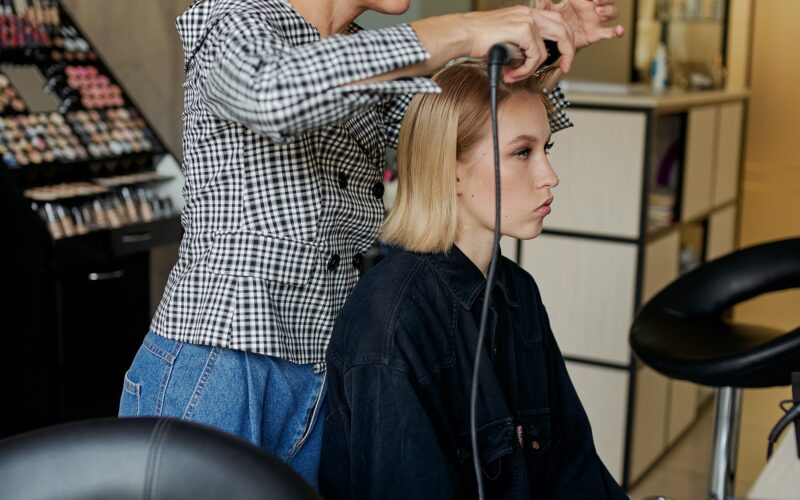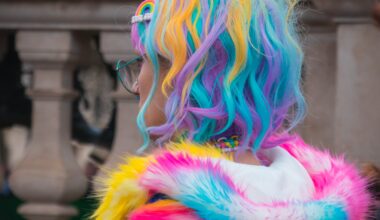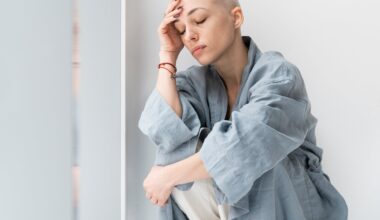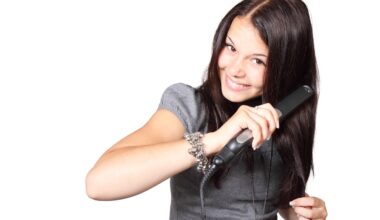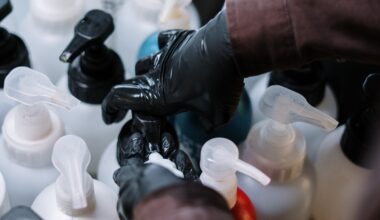Introduction
Hair straightening, a transformative technique that’s become a staple in the beauty world, is more than just achieving silky smooth tresses. It’s about feeling empowered, exuding confidence, and harnessing the magic of change. Over the past two decades, as a seasoned hairstylist, I’ve seen countless trends come and go. But the allure of straight, manageable hair remains timeless. Whether you’re prepping for an elegant event or simply seeking a change, mastering the art of hair straightening offers a world of possibilities. But, as with all hair transformations, knowledge is power. Let’s embark on this journey to unlock the secrets to impeccable hair straightening, ensuring your hair remains healthy, radiant, and undeniably sleek.
Key Takeaways:
- The transformative power of hair straightening.
- The evolution and timelessness of straight hair trends.
- Importance of knowledge and techniques for healthy, straight hair.
Different Methods of Hair Straightening
Straightening those wavy or curly locks isn’t a one-size-fits-all approach. Over my two decades in the hairstyling arena, I’ve seen and experimented with a myriad of techniques. Knowing which one to use is akin to selecting the right outfit for an occasion—it should fit perfectly and feel just right. Let’s dive into the most prominent methods, weighing their pros and cons.
Heat-Based Straightening: This method, often the first to spring to mind, involves using heated tools such as flat irons or straightening combs. With their ability to provide instant results, they’re a favorite for many.
Pros: Quick results; versatility in styles; temporary effect allows for a return to natural curls. Cons: Potential hair damage from excessive heat; not long-lasting; requires regular touch-ups.
Chemical Straightening: Often referred to by professionals as ‘relaxers’, this technique breaks down hair bonds and reforms them in a straight pattern. It’s a transformative experience for your tresses.
Pros: Long-lasting results; a smooth finish; reduces daily styling time. Cons: Can be harsh on hair; potential scalp irritations; the need for experienced professionals for application.
Natural Techniques: Yes, you read that right! There are ways to straighten hair without chemicals or heat. Methods include wrapping wet hair tightly around the head or using large rollers to set hair straight as it dries.
Pros: No exposure to harmful chemicals or heat; gentler on the hair; cost-effective. Cons: Not as effective for very curly hair; results might not be as sleek; temporary.
From the traditional to the modern, the world of hair straightening is vast and varied. The best method for you? It hinges on your hair type, desired results, and how you balance convenience versus care. After all, while it’s delightful to have hair that’s straight as an arrow, it’s crucial that it remains as strong as a bowstring.
How Hair Straightening is Done
There’s an art to straightening hair—a series of choreographed steps that, when done correctly, can lead to breathtakingly sleek and smooth results. Even if you’re looking to master hair straightening at home, understanding the process will make a world of difference. Ready to dive in? Let’s unravel the step-by-step guide!
- Start Clean: Always begin with freshly washed hair. Dirt and excess oil can impede the straightening process and lead to lackluster results.
- Protect Your Locks: Before you apply any heat or chemicals, ensure you’re using a heat protection spray or serum. It acts as a shield, preserving the health and integrity of your hair strands.
- Choose Your Tool: If you’re using a heat-based method, selecting the right straightening tool is pivotal. A ceramic flat iron or a hair straightening brush can yield remarkable results when used with care.
- Section Your Hair: Sectioning is a golden rule in hair straightening. Create small, manageable sections to ensure even application of heat or product.
- The Straightening Motion: Whether you’re using a straightening iron or a brush, always move from the root to the tip in a fluid motion. This technique ensures uniformity and reduces the potential for damage.
- Setting the Style: Once you’ve achieved your desired look, set it with a light hold hairspray. It’ll keep things in place without making the hair stiff.
- Stay Away from Moisture: Water is a straightened hair’s nemesis! Avoid moisture to ensure your style remains intact for longer.
Straightening your hair, whether at home or in a salon, doesn’t need to feel daunting. By following the above steps and being patient with your locks, you’ll not only learn how hair straightening is done but also enjoy results that are truly eye-catching.
Using Hair Straightening Products
The realm of hair straightening products is a treasure trove filled with gems that promise to deliver silky-smooth tresses. However, as with any treasure, it’s essential to distinguish the true gold from the fool’s gold. The right product can be a game-changer, while the wrong one can spell disaster. So, let’s embark on this exploratory journey together, unveiling the range of products in the market and discussing their efficacy and safety.
- Hair Straightening Creams and Serums: These products, infused with ingredients designed to smooth and straighten, can be applied before or after straightening. They aim to prolong the straight look and fend off frizz.
Pros: Lightweight; helps reduce frizz; offers some protection against environmental damage. Cons: May not be suitable for all hair types; effectiveness can vary.
- Heat Protection Sprays: Before any straightening session, a spritz of heat protection is a must. These sprays form a barrier, minimizing potential heat damage.
Pros: Protects hair from excessive heat; often lightweight and non-greasy. Cons: Overuse can lead to product buildup; essential to choose the right one for your hair type.
- Hair Straightening Shampoos and Conditioners: These are formulated to prep your hair, making the straightening process smoother. They often contain ingredients that promote a straight and sleek finish.
Pros: Aids the straightening process; can reduce styling time. Cons: Might not offer significant straightening on its own; results vary based on hair type.
- Hair Relaxers: A stronger solution, these are chemical treatments that alter the hair’s structure, offering a more permanent straightening effect.
Pros: Provides long-lasting results; significantly reduces daily styling time. Cons: Potentially harsh on hair; requires a professional touch for application.
- Keratin Treatments: A popular choice, keratin treatments fill in the porosity of your hair, taming the frizz and making the hair more manageable.
Pros: Smoothens and straightens; results can last for months. Cons: Can be on the pricier side; some treatments may contain formaldehyde.
In the cascade of products available, the key lies in understanding which hair straightening products are safe and align with your hair’s needs. It’s vital to remember that, while products can indeed be transformative, they should never compromise the health and vitality of your hair.
Safety Concerns with Hair Straightening
Straight hair might be a trend that refuses to fade, but our locks are as individual as our fingerprints. What works wonders for one person might be a nightmare for another. Given the numerous straightening methods, it’s imperative to be knowledgeable about potential safety pitfalls and how to protect your crowning glory from harm.
1. Heat Damage: Repeated and excessive use of heat-based tools, like flat irons and blow dryers, can weaken the hair shaft, leading to breakage, dryness, and split ends.
Protection Tip: Always use a heat protection spray before straightening and opt for ceramic or tourmaline tools which distribute heat more evenly.
2. Chemical Burns: Hair relaxers and some permanent straightening solutions contain potent chemicals. If not applied correctly, they can cause burns on the scalp or skin.
Protection Tip: It’s always best to have chemical treatments done by professionals. Ensure a patch test is performed before the full application.
3. Formaldehyde and Other Harmful Ingredients: Some hair straightening products, notably certain keratin treatments, might contain formaldehyde, a known carcinogen, or its derivatives.
Protection Tip: Check product labels thoroughly. Opt for formaldehyde-free solutions and always ensure proper ventilation during any treatment.
4. Alteration of Hair Structure: Chemical straighteners work by breaking and rearranging the hair’s internal bonds. This can permanently alter and weaken the hair structure.
Protection Tip: Regular deep conditioning treatments can help maintain the hair’s health. Limit the frequency of chemical straightening.
5. Allergic Reactions: Any product, natural or synthetic, can cause allergic reactions in some individuals. Symptoms can range from mild itching to severe rashes.
Protection Tip: Always conduct a patch test, especially with products containing strong chemicals, before full-scale application.
6. Over-straightening: Straightening your hair too often, whether using heat or chemicals, can lead to significant damage and a dull appearance.
Protection Tip: Take breaks between straightening sessions. Embrace your natural texture occasionally and treat your hair to hydrating masks.
When it comes to hair straightening, an informed approach is key. By understanding the potential hazards and arming yourself with protective measures, you can achieve that sleek, straight look without compromising your hair’s health.
Choosing the Best Hair Straightening Products
Every strand on our heads tells a unique story, and thus, one-size-fits-all doesn’t apply in the realm of haircare. Hair straightening products abound in the market, each promising a salon-worthy finish. But how do you sift through the glossy ads and pick what’s genuinely best for your hair? Here’s a guide to help you navigate this decision with confidence and ease.
1. Understand Your Hair Type: The roadmap to selecting the perfect product starts with understanding your unique hair type. Is it coarse or fine? Wavy or curly? Porous or non-porous? Your hair’s characteristics will determine its needs.
2. Read the Ingredients: Always, always peruse the ingredient list. Look for nourishing components like argan oil, keratin, and panthenol. Conversely, be wary of excessive chemicals or potential irritants, especially if your scalp is sensitive.
3. Set a Clear Goal: Do you want a temporary straight look for a night out? Or are you seeking a more lasting transformation? Your objective will guide your product choice, whether it’s a straightening serum for a one-off event or a more permanent treatment.
4. Reviews and Recommendations: In our digital age, customer reviews are a goldmine. They offer unfiltered insights into product performance. Additionally, consulting with friends or a trusted hairstylist can provide personalized recommendations.
5. Safety First: Especially when considering chemical treatments, it’s paramount to ensure that the product is safe. If a product is known to contain formaldehyde or its derivatives, think twice. And remember, the phrase “all-natural” doesn’t always equate to “safe.”
6. Ease of Use: For those who cherish convenience, select products that are easy to apply, especially if you’re considering a DIY approach. Some products require meticulous application, while others are more forgiving.
7. Price vs. Value: While it’s tempting to snag a bargain, remember that with certain products, you get what you pay for. Investing in a quality product might cost more upfront but can save you money (and hair health) in the long run.
8. Brands with a Reputation: Reputable brands often have rigorous testing and quality checks in place. Trusting them can sometimes reduce the risk of disappointment or damage.
Your hair is an extension of you, a canvas that showcases your personality, style, and choices. When choosing hair straightening products, prioritize your hair’s health and well-being. With the right products and practices, you can sport that sleek, straight look while ensuring your locks remain lustrous and vibrant.
Temporary Hair Straightening for Special Occasions
There’s a certain allure to switching up our hairstyle, if only for a short while. Maybe it’s for a wedding, a job interview, or simply to indulge in a different look. Temporary hair straightening allows us to experiment without committing to a lasting change. Here’s a guide on how to achieve that sleek and straight mane for your special occasions.
1. Preparation is Key: Just as an artist primes their canvas, preparing your hair ensures optimal results. Begin with clean, tangle-free locks. A lightweight conditioner can enhance smoothness and manageability.
2. Heat Protectant – Your Hair’s Bodyguard: Before exposing your hair to any heat, always apply a heat protectant. This shields your strands from potential damage and aids in achieving a smoother finish.
3. Blow Dry with Technique: For those with wavy or curly hair, blow drying is the first step. Use a large round brush, pulling your hair taut. Aim the dryer downwards to smooth the hair cuticles, minimizing frizz.
4. Choosing the Right Tool: While flat irons are the go-to for most, don’t overlook hair straightening brushes. They can be gentler and quicker, especially for those with only slight waves. When picking a flat iron, opt for one with adjustable temperature settings. This allows you to use the lowest effective heat, reducing potential damage.
5. Section and Straighten: Section your hair, starting at the nape of your neck. This ensures even heat distribution and a consistent finish. Glide your tool slowly from roots to tips, avoiding multiple passes over the same section.
6. Finishing Touches: Once your hair is straight, a lightweight serum or oil can add shine and prevent static. If you’re facing a humid day, a spritz of anti-humidity spray can keep your locks in line.
7. Post-event Care: After your special occasion, treat your hair to some TLC. A hydrating mask or deep conditioner can replenish any lost moisture, ensuring your hair remains resilient and vibrant.
Temporary hair straightening is like playing dress-up for your tresses. It allows for transformation without permanence. And with the right techniques and care, you can indulge in a new look without compromising the health of your hair.
Hair Straightening at Home
Ah, the convenience of styling your hair in the familiar ambiance of home. No appointment needed, no salon costs, and no small talk. But achieving salon-quality results at home requires technique, knowledge, and the right tools. Here’s a comprehensive guide on mastering the art of hair straightening from the comfort of your own space.
1. Equip Yourself: The cornerstone of any good hairstyling session is having the right tools. Whether you’re using a ceramic flat iron, a titanium press, or a hair straightening brush, ensure it’s of good quality and suitable for your hair type.
2. Healthy Hair is Responsive Hair: Before even thinking about straightening, make sure your hair is in good health. Regular trims, hydrating masks, and avoiding excessive chemical treatments can make the straightening process smoother and the results longer-lasting.
3. Start with Clean, Dry Strands: Freshly washed hair responds better to straightening. Ensure your hair is completely dry, either naturally or with a blow dryer, before using any straightening tools.
4. Divide and Conquer: Separate your hair into manageable sections. This ensures even heat distribution and a consistent look, allowing you to focus on one portion at a time.
5. Less Heat, More Technique: Contrary to popular belief, higher heat doesn’t always mean straighter hair. Often, it’s the technique that matters more. Start at a lower heat setting and adjust only if necessary.
6. Use of Hair Straightening Brushes: These brushes, a fusion between traditional brushes and flat irons, offer a gentler approach to hair straightening. They can be particularly effective for those seeking a more natural straight look or those with fine hair. However, ensure you pick a quality product, as all brushes are not made equal.
7. Maintaining that Sleek Look: Once you’ve achieved the desired straightness, help it last! Avoid moisture and use a light holding spray to ensure longevity. For those prone to frizz, serums can be a lifesaver.
8. Post-Straightening Care: After subjecting your hair to heat, it’s essential to pamper it. Consider deep conditioning treatments or hair oils to replenish and maintain hair health.
Achieving professional-grade hair straightening at home is entirely possible with the right approach. The key lies in understanding your hair, having patience, and being gentle with your precious locks.
Hair Straightening and Pregnancy
The journey of pregnancy is filled with changes, joy, anticipation, and, inevitably, a few concerns. One such concern that often arises is about the safety of hair treatments during pregnancy. Can you continue your routine hair straightening treatments while expecting? Let’s dive in.
1. Understanding the Concerns: Pregnancy causes a surge in hormones, which can alter the texture and growth pattern of your hair. But the primary concern regarding hair straightening during pregnancy is the potential exposure to harmful chemicals, especially if you’re using chemical straightening treatments.
2. Chemical Straightening and Pregnancy: Chemical treatments, like relaxers or keratin treatments, contain compounds that, if inhaled or absorbed by the skin, could pose risks. While there isn’t conclusive evidence about their direct impact on fetal health, it’s always wise to exercise caution.
3. The Safer Bet – Natural and Physical Methods: If you’re keen on straightening your hair during pregnancy, consider physical methods like using a flat iron or a hair straightening brush. They don’t involve chemicals and are generally considered safe. Just ensure you’re in a well-ventilated room to avoid overheating and use a heat protectant to minimize hair damage.
4. Opt for Natural Products: If you’re looking to use products to aid in straightening, lean towards those with natural ingredients. Avoid formulations that have strong chemical odors or those that can release fumes.
5. Always Consult with Your Obstetrician: Every pregnancy is unique. Before making any decision regarding hair treatments, consult with your obstetrician. They can provide personalized advice tailored to your health and your baby’s wellbeing.
6. Be Mindful of Sensitivity: Pregnancy can sometimes heighten skin sensitivity. Before using any product, even those you’ve used before, consider a patch test to ensure you don’t have an adverse reaction.
7. Embrace the Change: Remember, pregnancy might bring about temporary changes to your hair’s texture. It’s a period of transformation. Embracing the natural wave or curl that hormones might bestow upon you can also be a delightful change!
In the end, while it’s natural to want to feel and look your best during pregnancy, safety should always be the priority. With careful consideration and consultation, you can make informed choices that align with your beauty routine while ensuring the safety of your growing baby.
Conclusion
Mastering the art of hair straightening is more than just wielding a flat iron or applying a chemical treatment. It’s a harmonious blend of understanding one’s hair, selecting the right methods, and employing safety precautions. Especially in our modern age, with so many products and techniques at our fingertips, the importance of informed decisions cannot be overstated.
Hair straightening can empower and uplift, offering a transformative experience both in appearance and confidence. Whether you opt for temporary styling for a special event, choose to straighten your hair regularly, or contemplate treatments during special life phases like pregnancy, the foundational principles remain: know your hair, prioritize its health, and always err on the side of caution.
Remember that while trends come and go, the health of your hair and scalp will have long-lasting implications. By staying informed, you can continue to enjoy the sleek, chic elegance of straightened hair while ensuring it remains lustrous and healthy.
For those eager to delve deeper or explore further, there are numerous resources available on advanced techniques, product reviews, and expert insights. As with any beauty endeavor, continuous learning and adaptation to one’s unique needs are paramount.
Additional Resources
For those passionate about hair care and eager to expand their knowledge on hair straightening, the journey doesn’t end here. Delving deeper into the realm of hair health, techniques, and innovations can be both enlightening and rewarding. Here are some resources to guide you further:
- Books:
- “The Science of Black Hair” by Audrey Davis-Sivasothy: An insightful dive into the unique properties of Afro-textured hair, offering guidance on care, styling, and treatments.
- “The Hair Bible: The Ultimate Guide to Healthy, Beautiful Hair Forever” by Susan Craig Scott and Karen W. Bressler: Comprehensive coverage on hair care for various types, including guidance on treatments and products.
- Websites:
- NaturallyCurly: A platform dedicated to curly hair care, offering articles, product recommendations, and community discussions.
- HairBuddha: Focused on natural hair care solutions, providing insights into holistic treatments and routines.
- YouTube Channels:
- Luhhsetty: A channel filled with hair tutorials, product reviews, and hair care tips.
- Milabu: Offering a mix of short hair tutorials, reviews, and tips for hair health.
- Forums and Communities:
- HaircareTalk Forum: A community where hair enthusiasts discuss routines, products, and share experiences.
- Reddit’s r/HaircareScience: A subreddit dedicated to the science of hair care, offering a platform to ask questions, share knowledge, and discuss the latest research.
These resources provide a springboard for further exploration. As with any journey, remember that personal experience is invaluable. Experiment, learn from both successes and mistakes, and always prioritize the health and well-being of your hair.
